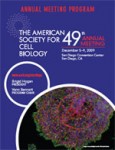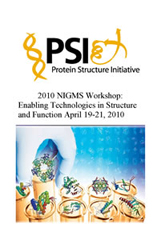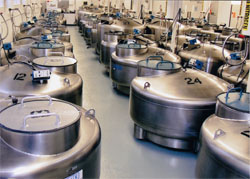 Last week, the American Society for Cell Biology held its 49th annual meeting in San Diego. There were thousands of attendees, including many of our funded investigators as well as a few of us from NIGMS. As a new program director, I enjoyed meeting many of the grantees and applicants I’ve talked to on the phone or by e-mail. I met a few others, too, who stopped by the NIGMS booth to get information on funding opportunities.
Last week, the American Society for Cell Biology held its 49th annual meeting in San Diego. There were thousands of attendees, including many of our funded investigators as well as a few of us from NIGMS. As a new program director, I enjoyed meeting many of the grantees and applicants I’ve talked to on the phone or by e-mail. I met a few others, too, who stopped by the NIGMS booth to get information on funding opportunities.
I can’t even begin to come up with an exhaustive list of all highlights from the 5-day program, so I will share just a few.
I was most excited about how discoveries made using “simple” organisms, such as yeast and unicellular algae, are informing models of human disease in new ways. For example, studies of centriole biogenesis and cilia formation in invertebrates have provided a mechanistic understanding of human ciliopathic disorders such as Bardet-Biedl syndrome. Interestingly, the relationship between human disorders and basic research is a two-way street: By doing a genetic analysis of plant and invertebrate orthologs of genes mutated in people with Bardet-Biedl syndrome, researchers have identified an evolutionarily conserved ciliogenesis “toolkit.”
In his keynote symposium talk, Dr. Rudolf Jaenisch presented another way to think about model systems. He discussed the potential of deriving induced pluripotent stem (iPS) cells from patients, causing the cells to differentiate into a certain type or organ system, and then using the differentiated cells to test for patient-specific drug interventions or gene therapy treatments. There are still scientific and technical challenges, such as recreating the progression of disease development and pathology in a culture dish, but I think that using iPS cells to model human disease may revolutionize our understanding of the cellular basis of disease and, in turn, help us learn more about how normal cells work.
The meeting also stressed the importance of science outreach. During a plenary lecture about the role of NIH in supporting basic research, especially in cell biology, NIH Director Dr. Francis Collins also talked about the role of scientists in educating various groups on the intrinsic value and economic impact of scientific research. Dr. Lawrence S. B. Goldstein echoed this sentiment during his acceptance speech for the ASCB Public Service Award by describing how even small efforts, such as explaining the potential of stem cell research to your neighbor, can have a cumulative impact.
I left knowing that this is definitely an exciting time to be a cell biologist, and I’m already looking forward to the 2010 meeting in Philadelphia.




 Last week, the American Society for Cell Biology held its 49th annual meeting in San Diego. There were thousands of attendees, including many of our funded investigators as well as a few of us from NIGMS. As a new program director, I enjoyed meeting many of the grantees and applicants I’ve talked to on the phone or by e-mail. I met a few others, too, who stopped by the NIGMS booth to get information on funding opportunities.
Last week, the American Society for Cell Biology held its 49th annual meeting in San Diego. There were thousands of attendees, including many of our funded investigators as well as a few of us from NIGMS. As a new program director, I enjoyed meeting many of the grantees and applicants I’ve talked to on the phone or by e-mail. I met a few others, too, who stopped by the NIGMS booth to get information on funding opportunities.